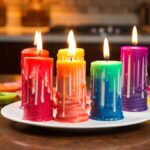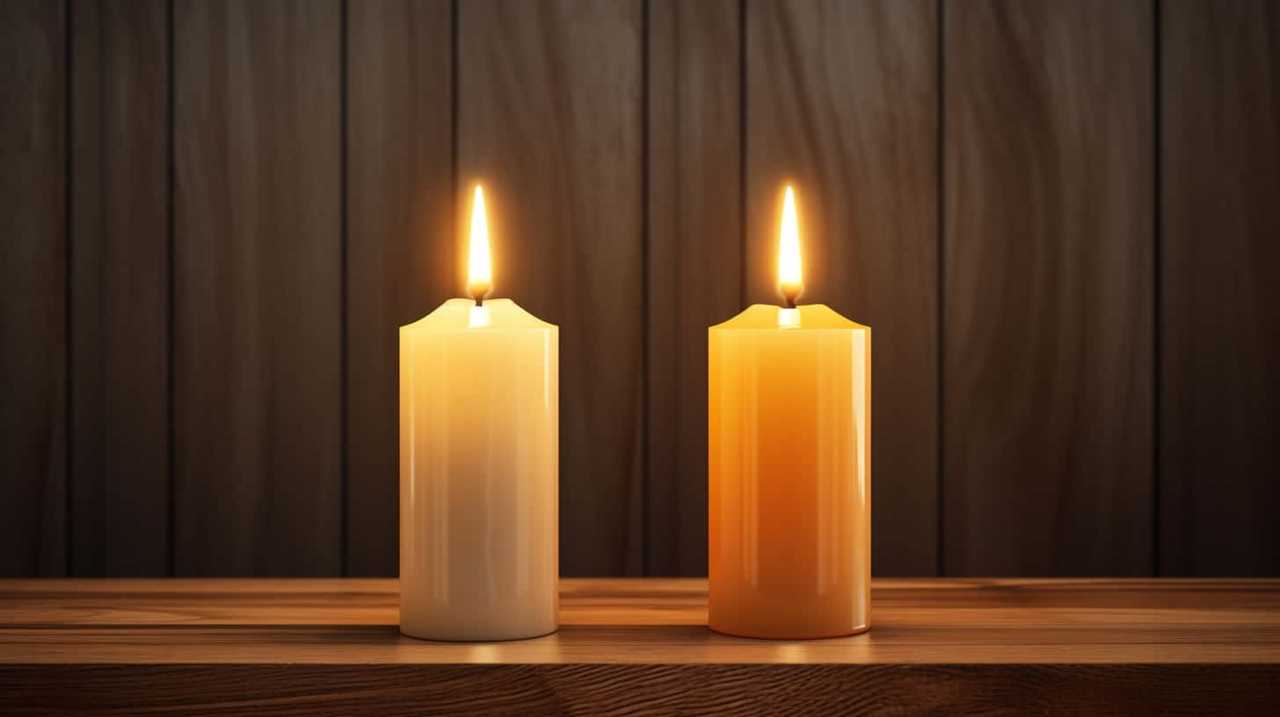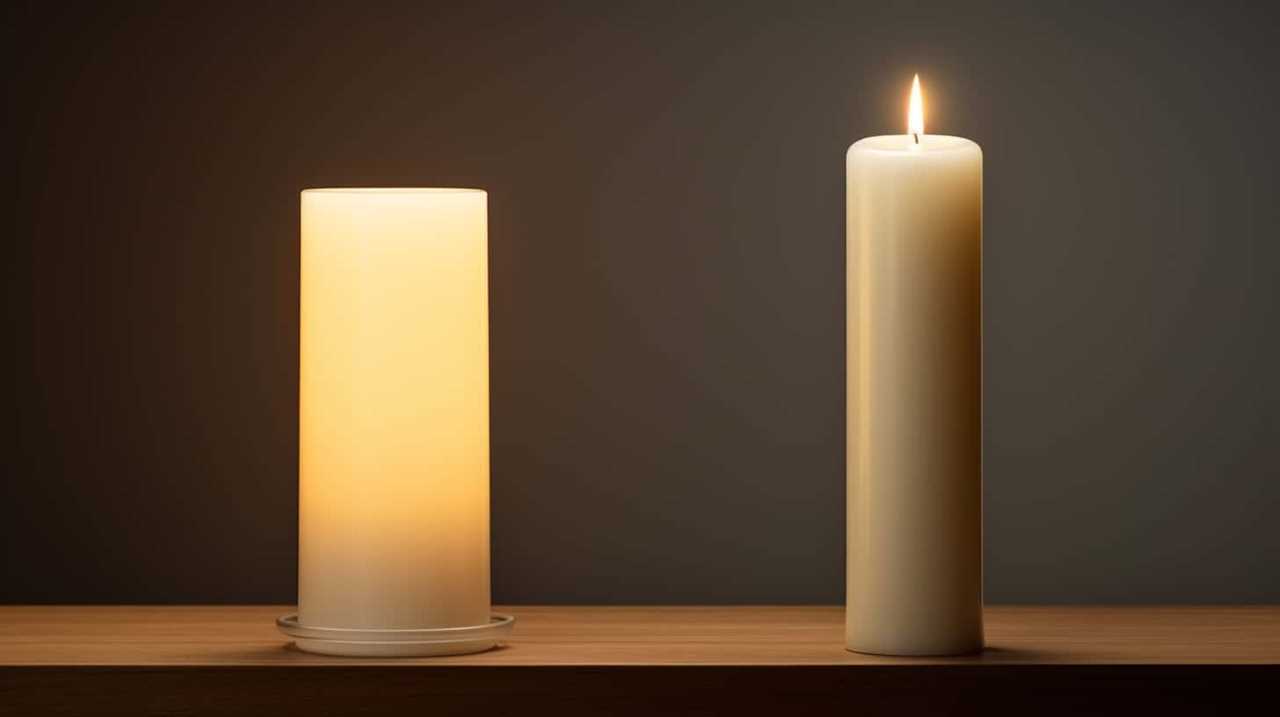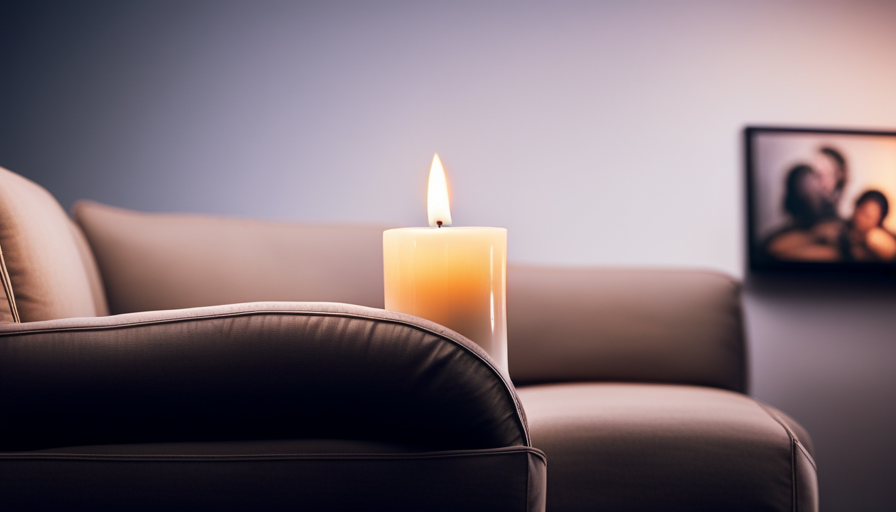As we approach the start of 2024, the warm glow of the Yahrzeit candle reminds us to pay tribute and keep alive the memory of our departed loved ones.
Understanding the significance of when to light the Yahrzeit candle in 2024 is crucial for maintaining a connection with our loved ones. The timing of these sacred moments holds a key to unlocking the memories and emotions tied to our departed family members.
By marking these dates with the warm glow of remembrance, we can ensure that the legacy of those we hold dear continues to illuminate our lives.
Key Takeaways
- Yahrzeit candles are traditionally lit at sundown the night before Yizkor days.
- Lighting the candle at sundown aligns with the Jewish calendar and honors the memory effectively.
- Leaving the candle to burn until extinguished symbolizes the eternal flame of remembrance.
- Actual candles and electric Yahrzeit candles are both acceptable for lighting.
Significance of Yahrzeit Candle
The significance of the Yahrzeit candle lies in its solemn role as a symbol of remembrance and tribute to the departed souls of our loved ones. When a person passes away, the date of death is marked on the Hebrew calendar, known as the Hebrew date. It's on this specific date each year that the yahrzeit candle is kindled to honor the memory of the deceased.
The lighting of the yahrzeit candle is a profound tradition deeply rooted in Jewish culture, signifying the eternal flame of remembrance that burns brightly in our hearts. As we gather to light the yahrzeit candle, we reflect on the life of the one we've lost and the impact they'd on our lives. The flickering flame serves as a beacon of light, guiding us through the darkness of grief and reminding us of the enduring love we hold for those who've passed.
It's customary to let the candle burn until it extinguishes on its own, symbolizing the completion of a year of mourning since the death occurred. In modern times, an electric yahrzeit candle can also be used for safety reasons, ensuring that the flame continues to burn in honor of our beloved departed.
Yahrzeit Candle Lighting Dates

As we approach the sacred moments of remembrance, it's customary to light the Yahrzeit candle at sundown on the eve preceding Yizkor days. The Yahrzeit candle serves as a beacon of remembrance for those who've passed on, symbolizing the eternal light of their memory.
In 2024, the specific dates for lighting the Yahrzeit candle are as follows:
- September 28
- October 10
- April 4
- May 18
These dates mark the anniversaries of their passing and provide us with an opportunity to honor their lives and reflect on the impact they had on us.
It's important to remember that the Yahrzeit candle should be allowed to burn until it extinguishes on its own, signifying the completion of the mourning period. Alternatively, an electric Yahrzeit candle can be owned and operated as a safer alternative, maintaining the tradition while ensuring safety.
May the light of the Yahrzeit candle continue to illuminate our hearts and souls, keeping alive the memories of our dearly departed.
Traditions and Customs
Commencing with sacred reverence, our ancestral traditions and customs guide us in honoring the memory of our departed loved ones. The lighting of the Yahrzeit candle holds a significant place in Jewish tradition, serving as a solemn ritual to commemorate the anniversary of their passing.
In the year 2024, it's essential to observe the Yahrzeit candle lighting at sundown on the eve before the designated Yizkor days: April 30, June 13, October 12, October 24, and October 2.
These dates aren't merely markers on a calendar but rather poignant moments where we're afforded the opportunity to connect deeply with the memory of our loved ones who've passed on. The Yizkor days in 2024 hold a special place in Jewish tradition, offering a chance for reflection, prayer, and remembrance.
Historical Origins and Meaning
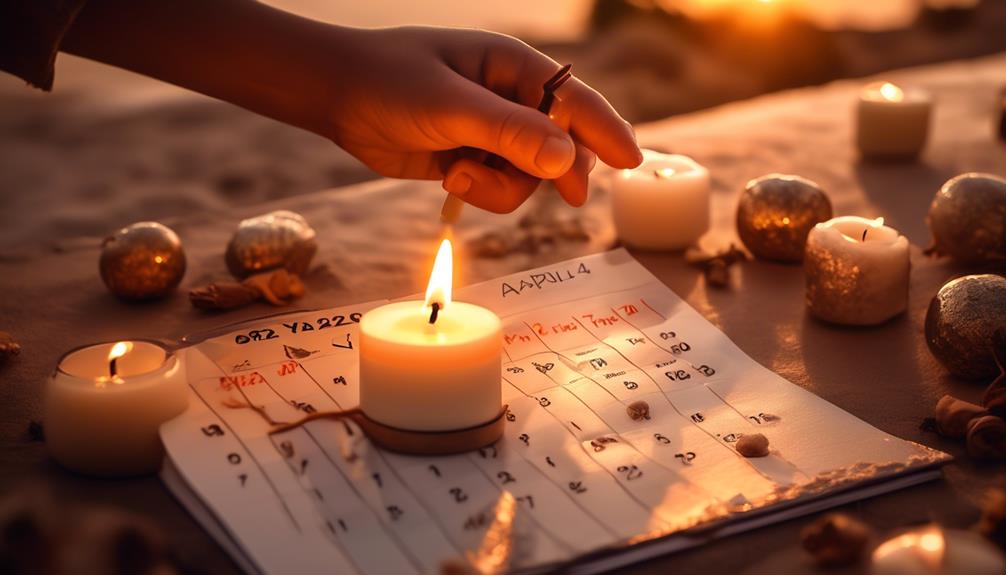
In tracing the historical origins and imbued meanings of the Yahrzeit candle ritual, we uncover a tapestry woven with threads of remembrance and reverence.
- Ancient Roots: The tradition of lighting Yahrzeit candles can be traced back to ancient Jewish customs of honoring the deceased and ensuring their memories endure through generations.
- Symbolism: The flickering flame of the Yahrzeit candle symbolizes the eternal presence of the soul, casting light on the path of remembrance and guiding our reflections on the lives of those who've passed.
- Community Connection: Lighting the Yahrzeit candle on designated Yizkor days fosters a collective remembrance within the Jewish community, uniting individuals in shared rituals of mourning and celebration of legacy.
- Spiritual Continuity: Through the act of kindling the Yahrzeit candle, we not only honor the departed but also affirm our commitment to preserving their legacies, ensuring that their spirits continue to illuminate our lives with wisdom and love.
How to Prepare for Yahrzeit
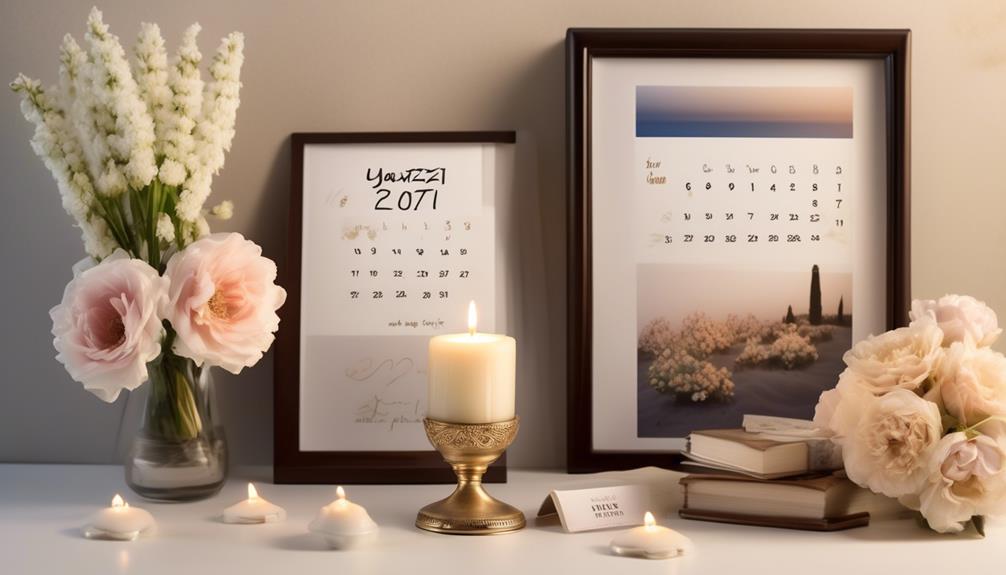
As we approach the solemn occasion of Yahrzeit, it's essential to prepare thoughtfully for this time of remembrance.
The candle lighting ritual holds deep significance, symbolizing the eternal light of memory.
Engaging in meaningful remembrance practices can help us honor the memory of our loved ones and find solace in our traditions.
Candle Lighting Ritual
Preparation for observing Yahrzeit includes the solemn and meaningful act of lighting the Yahrzeit candle in remembrance of a loved one.
As we approach this sacred ritual, let's consider the following:
- Selecting the Candle: Choose a Yahrzeit candle that holds significance, perhaps in the color or design, reflecting the essence of the departed soul.
- Location and Time: Find a peaceful spot to place the candle, ensuring it will burn undisturbed for the full 24 hours, starting at sundown on the eve of the anniversary.
- Intentions and Reflection: Before lighting the candle, take a moment to focus your thoughts, offering prayers or memories of the departed.
- Observing the Flame: Throughout the candle's burning, spend time in contemplation, honoring the memory of your loved one.
Meaningful Remembrance Practices
To honor our departed loved ones in a meaningful way, one essential practice is the reverent lighting of the Yahrzeit candle at the designated time.
This act of kindling the Yahrzeit candle at sundown on the eve of the Yizkor days serves as a solemn remembrance of the anniversary of our dear one's passing.
By following the specified dates for lighting the Yahrzeit candle, such as Sept. 28, Oct. 10, 2021, April 4, and May 18, we uphold a time-honored Jewish tradition that allows us to pay tribute to those who've left this world.
The lighting of the Yahrzeit candle isn't merely a ritual; it's a poignant moment for reflection, commemoration, and honoring the memory of our beloved departed.
Symbolism and Significance
In preparing for Yahrzeit, we solemnly embrace the symbolism and significance of lighting the yahrzeit candle to honor and remember our dearly departed.
The flickering flame symbolizes the eternal presence of the soul and the light they brought into our lives.
The act of lighting the yahrzeit candle is a sacred tradition that connects us to our heritage and spirituality.
The burning candle signifies the endurance of memory and the eternal bond we share with those who've passed.
Through this ritual, we pay homage to the legacy and impact of our loved ones, ensuring they're never forgotten.
Symbolism in Yahrzeit Candle Lighting
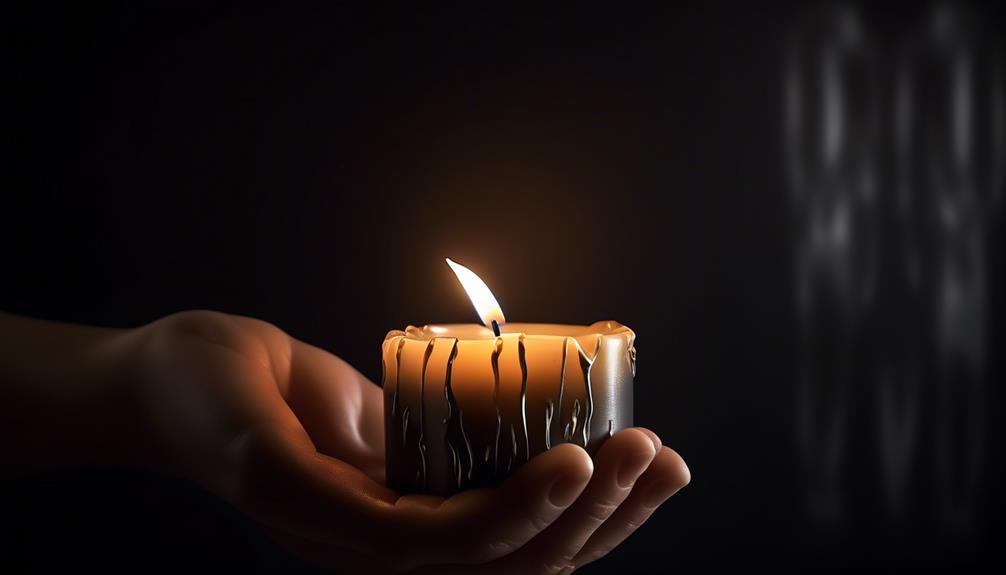
The lighting of the yahrzeit candle embodies a profound ritual of remembrance and tribute to those who have passed. This act holds deep symbolism, reflecting our commitment to honoring the memory of our loved ones who are no longer with us. As we kindle the yahrzeit candle, we ignite not just a physical flame but also the eternal light of remembrance in our hearts.
| Symbolism | Description |
|---|---|
| Light | Represents the eternal presence of the soul of the departed, guiding and watching over us. |
| Continuity | Symbolizes the passing of traditions and memories from generation to generation. |
| Reflection | Encourages introspection, meditation, and contemplation on the impact of the departed souls. |
In the flickering flame of the yahrzeit candle, we find solace, connection, and a sense of continuity with our past. May the light we kindle serve as a beacon of love and remembrance, illuminating the path of our cherished memories.
Yahrzeit Candle Etiquette

Embodying the reverence and tradition of yahrzeit candle lighting, our observance extends to the appropriate etiquette guiding this solemn ritual.
Yahrzeit Candle Etiquette
- Timing: Yahrzeit candles are traditionally lit at sundown the night before Yizkor days, aligning with the Jewish calendar. It's essential to adhere to this timing to honor the memory of the departed soul effectively.
- Duration: The yahrzeit candle should be left to burn until it extinguishes on its own. This act symbolizes the eternal flame of remembrance for the loved one who's passed away.
- Types of Candles: While both actual candles and electric yahrzeit candles are acceptable, the latter is often favored for its safety benefits. When choosing the type of candle, consider safety alongside tradition.
- Placement and Setting: Place the yahrzeit candle in a safe location, away from any flammable materials, and in a spot where it can burn undisturbed. Create a serene setting to honor the memory of the departed soul with dignity and respect.
Frequently Asked Questions
When Should a Yahrzeit Candle Be Lit?
We honor the memory of our loved ones by lighting the Yahrzeit candle at sundown on the eve of Yizkor days. This sacred act symbolizes our eternal connection with those who've passed.
In 2024, we shall kindle the flame on Sept. 28, Oct. 10, April 4, and May 18, aligning with the Yizkor dates.
Let's come together in remembrance, reflecting on the lives that have touched ours deeply.
How Do You Calculate a Yahrzeit Date?
Calculating a Yahrzeit date involves determining the anniversary of a loved one's passing according to the Hebrew calendar. This process typically considers the Hebrew date of death and matches it with the corresponding date in subsequent years.
What Is the Yahrzeit Date for Death?
When we reflect on the yahrzeit date for a loved one's passing, we honor their memory and legacy. This sacred day marks the anniversary of their death, a time for solemn remembrance and prayer.
Lighting the yahrzeit candle at sundown the night before this significant date symbolizes our enduring connection to those we've lost. Through this act of commemoration, we honor their lives and the impact they'd on our own.
What Are Dates of Yizkor?
Yizkor dates, significant in Jewish tradition, provide moments to honor and remember departed loved ones. These dates hold deep meaning and encourage connection with the memories of those who've passed.
Yizkor services offer a space for reflection and commemoration. It's a time to honor the legacy and impact of those we've lost.
Embracing these moments of remembrance strengthens the bond between the living and the deceased.
Conclusion
In conclusion, the lighting of the Yahrzeit candle in 2024 holds deep significance in honoring the memory of our departed loved ones. As we observe the designated dates for lighting the candle, we're reminded of the traditions, customs, and symbolism that connect us to our past.
How will you honor your loved ones as you light the Yahrzeit candle in the coming year?






